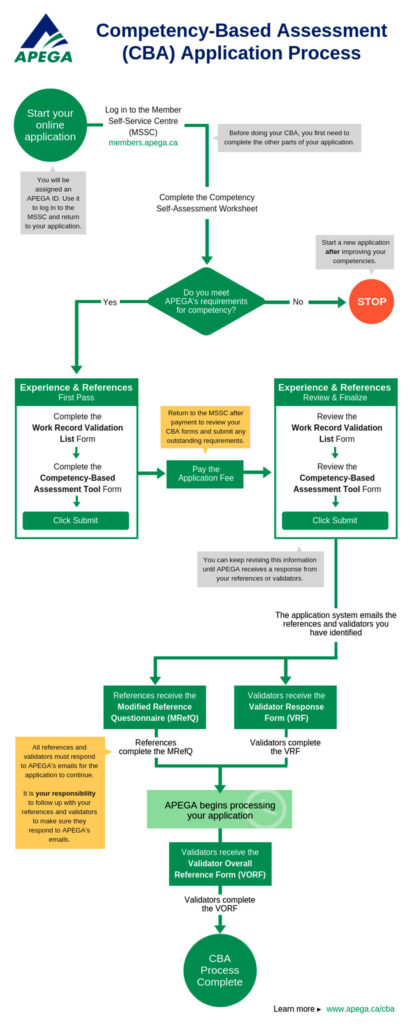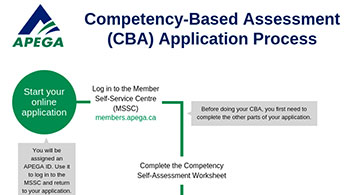 This is the fifth and last of a series of examples on how to complete your experience requirements when applying for your APEGA licensure requirement. The examples presented here are based on my personal experience and will not necessarily be the same as yours. This will serve only as guide and not a “copy and paste” approach.
This is the fifth and last of a series of examples on how to complete your experience requirements when applying for your APEGA licensure requirement. The examples presented here are based on my personal experience and will not necessarily be the same as yours. This will serve only as guide and not a “copy and paste” approach.
I suggest for those who will write their Experience Records to start on and follow the examples below. The previous competencies examples can be found on the Alberta Filipino Journal website under the Education Section (http://www.albertafilipinojournal.com/category/living/education/). The complete competency category can be found on the APEGA website.
Competency Category 6 – Social, Economic, Environmental and Sustainability
6.1 Public Impacts and Safeguards
Demonstrate an understanding of the safeguards required to protect the public and the methods of mitigating adverse impacts
• Awareness of the potential professional liability involved in all aspects of the design, construction, and inspection process
Example: As structural engineer in training, it is important to understand the potential professional liability in performing the job assigned. Although I am not signing the plans, due diligence is important as I do my part in the process.
As I do the detailed calculations for sizing of members for a wooden frame structure, I make sure that I am following the latest design codes. I understand that these design codes are the basic requirements to follow to ensure the protection of those who will occupy the building. During the shop drawing review of the structural wood members, I made sure that the correct strength of wood as per design basis was followed and that it is consistent with the design loads I specified in the General Notes and the calculation documents I made during the detailed design process.
As the project progresses, the Inspection reports I did must be consistent with the compliance of the Contractor on all approved-for-construction drawings. The safeguards I employ in the performance of my job must be addressed during the detailed calculations as my work is checked by my superior, shop drawings are properly reviewed, and the inspections are carried out in a way that critical elements of the structures are captured and documented.
6.2 Engineering and the Public
Demonstrate an understanding of the relationship between the engineering activity and the public
• Recognize the value and benefits of the engineering work to the public
• Prepare reports regarding the impact of a project to public
Example: As I performed my job as EIT, the job must always be error-free as it involves the safety of the public. One project I was involved with is the design of a simple variable message sign (VMS) installed onto a single tubular pole of about 7.0m high. The signage was to be installed on a busy highway and needed to be designed to withstand all types of forces. While completing my design, I was advised by my senior engineer to perform a fatigue analysis as it is critical for those types of structures. The sign (although a simple structure) could pose a big threat to the general public as it is exposed on a busy highway. It had to be detailed and accurately analyzed according to the provisions of applicable code requirements.
As I analyze different load conditions, it is important to note that this “simple structure” will be a great benefit to the public as it will be used as information signage for those who travel the highway; however, it can only serve its purpose if it is designed precisely and accordingly to the intended life of the structure.
6.3 Role of Regulatory Bodies
Understand the role of regulatory bodies on the practice of engineering
• Recognize the importance of respecting the regional traditions and native regulations towards a project
• Understand the role and regulations of other professions whose practices overlap or interface with the practice of professional engineering
Example: Presently, I am working in a Multi-Discipline company where excellent coordination is key to the success of every project. I am coordinating my design with Mechanical and Electrical Engineers who have their own different code provisions, bound by their practice as Professional Engineers. As I prepare final design calculations, I have to be aware of their requirements as to their compliance according to their discipline.
I have to understand that the integration of each discipline in a specific project must be of compliance and it is fair to all concerns.
6.4 Sustainability and Practice Guidelines
Be aware of any specific sustainability clauses that have been added to practice guidelines that apply to their area
• Awareness and understanding
Example: As a professional, day to day activity at the office of saving office supplies usually applies. If there is no need to print emails, communications, shop drawings, etc., I conduct my job though electronic means. Use of applicable software for check-prints are implemented, as well as the use of recycled paper for my calculation sheets as this will save us from more office waste.
With this simple act, sustainability awareness in a workplace can be applied.
6.5 Promotions of Sustainability
To the extent possible, recognizing the applicant’s position of influence, consider how sustainability principles could be applied and promoted in his or her specific work
• Include sustainability analysis in project descriptions
Example: In the performance of my job as Engineer in Training, I make sure that selecting sustainable materials for the construction of buildings are strictly implemented according to the code of practice of standards. The choice of Engineered Wood Products as applicable compared to steel or concrete materials is used. The cost of materials and the awareness of the amount of carbon footprint it will inhibit are one of the considerations in my analysis.
In recent years, more and more materials that are sustainable in nature are becoming the trend in constructions. Attending new product demonstrations and training is one of the ways of promoting sustainability in my profession.
This article completes the APEGA 22 Key Competency. The examples I presented are some of the ideas that you need to consider when writing your Competency Self-Assessment Worksheet (CSAW) for your APEGA Application. The CSAW printable version can be downloaded from the APEGA website. Please note that in writing your CSAW, you have to break your experience into 3 parts. First, the “Situation” which defines the instances in which the specific Key Competency applies, second, the “Action” which narrates what you did or your specific role in the “Situation”, and third, the “Outcome” – you will narrate here the result of the action you did.
The examples I provided here and in the past issues of Alberta Filipino Journal are some examples of a “Situation” and will need to be further elaborated.


